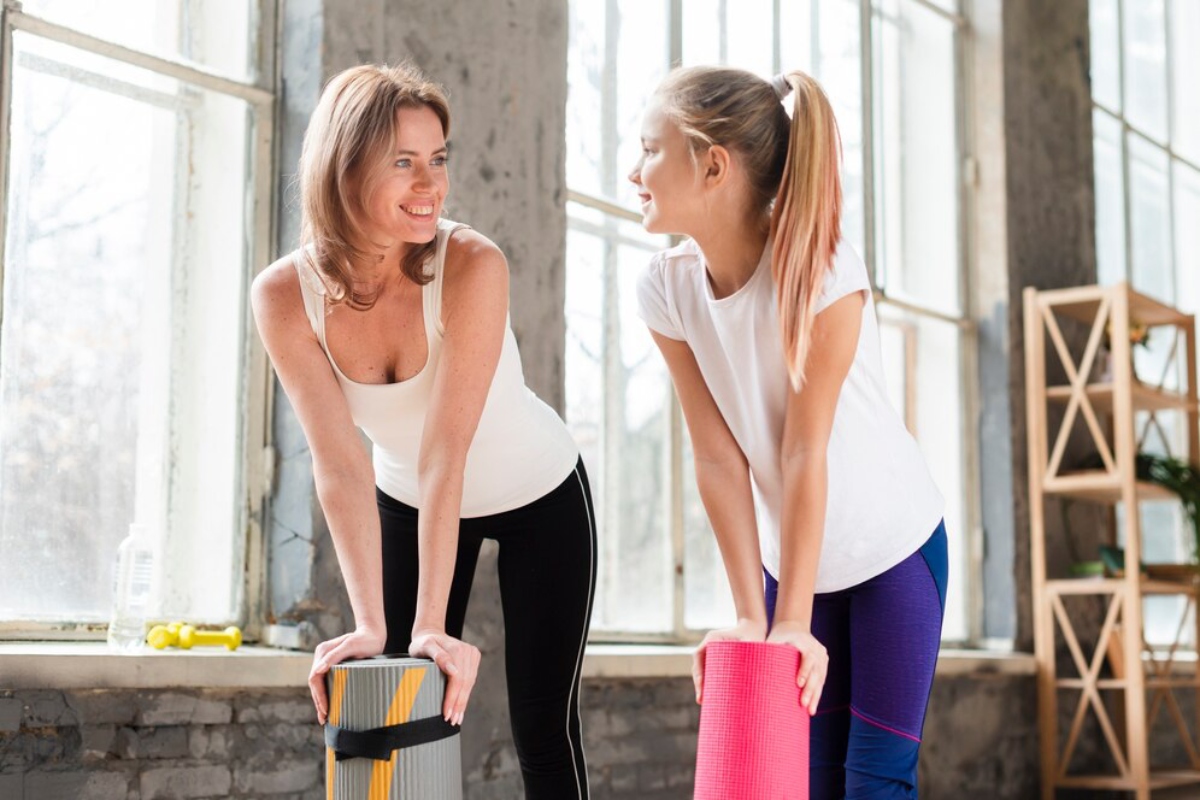
Teaching Boys and Girls About Healthy Body Expectations
Why Body Expectations Start Early
It starts young. Your eight-year-old daughter frowns at her tummy in the mirror. Your ten-year-old son asks whether he’ll get abs like his favourite YouTuber. These moments are subtle, but powerful. They mark the start of a child questioning how they “should” look, often long before puberty truly begins.
The world our children grow up in is noisy. Between social media, streaming platforms, adverts, and peer chatter, they’re constantly receiving messages about the “ideal” body — lean, tall, strong, flawless. And let’s face it most of those ideals are curated, filtered, and far from realistic.
This blog is your guide to helping children — both boys and girls — build healthy body expectations. You’ll learn why early intervention matters, how to talk about bodies without shame or judgment, and how to create an environment where self-worth is rooted in more than appearance.
Because teaching body positivity isn’t about ignoring image — it’s about reshaping how children see themselves, others, and what truly makes a body healthy and valuable.
Why Kids Struggle with Body Expectations
Unseen Pressures Start Before Puberty
It’s a common myth that body image concerns start in the teenage years. In reality, studies show that children as young as five express dissatisfaction with their bodies.
A 2022 report from the Royal Society for Public Health revealed that:
- Over 60% of primary school children felt pressure to look a certain way.
- Nearly 1 in 3 said they wanted to be thinner.
- Boys were increasingly concerned about gaining muscle or looking “tough.”
These thoughts don’t appear out of nowhere. They stem from:
- Social comparisons with friends and siblings
- Exposure to unrealistic media standards
- Comments from adults (even well-meaning ones)
- Lack of visible body diversity in everyday life
What Are “Healthy Body Expectations”?
Let’s define it clearly. Healthy body expectations mean:
- Understanding that bodies come in many shapes, sizes, and abilities
- Knowing that health and beauty are not the same
- Accepting that growth, weight changes, and differences are normal
- Learning to value function, strength, and well-being over aesthetics
It’s not about telling children their bodies are “perfect” — it’s about helping them know they are enough.
Gendered Pressures: Boys and Girls Face Different Messages
For Girls:
Girls often absorb messages that link worth with thinness, smooth skin, and being “pretty.” Social media, magazines, and even cartoons subtly reinforce this idea.
They may:
- Want to start dieting early
- Feel embarrassed about body hair or acne
- Develop fear around weight gain during puberty
For Boys:
Boys often receive different—but equally harmful—messages. They’re taught to value:
- Height, muscularity, and strength
- A “cool” or “tough” appearance
- Suppression of emotional vulnerability linked to body insecurities
This can lead to:
- Overexercising or an early interest in supplements
- Shame over softness or “baby fat”
- Reluctance to open up about body discomfort
What Both Genders Need:
- Reassurance that their bodies are doing what they’re supposed to
- A space to ask questions without judgment
- Role models who reflect real, diverse, human bodies
How to Teach Realistic Body Image and Expectations

1. Start with Language: Watch What You Say
Words shape beliefs. Kids listen closely, even when you’re not speaking directly to them.
Avoid:
- Complimenting only appearance: “You look so slim today.”
- Body-based criticism: “I need to lose weight before the holiday.”
- Food shaming: “That’s a bad snack,” or “I was naughty — I ate cake.”
Instead, try:
- “I love how strong you look climbing that wall.”
- “It’s amazing how our bodies change as we grow.”
- “Let’s enjoy food that makes us feel energised.”
Your words don’t need to be perfect. They just need to be respectful and balanced.
2. Focus on What Bodies Can Do
Reframe the conversation from appearance to ability. This helps kids appreciate how their bodies function.
Examples:
- “Your legs helped you kick that ball so far.”
- “Your arms gave your friend such a strong hug.”
- “Your brain helped you solve that tricky maths question.”
Kids develop pride in their whole self, not just the surface.
3. Diversify the Images Around Them
Show your child different types of bodies — in books, TV shows, public spaces, and conversations. Make sure they see:
- People of different sizes, shapes, and skin tones
- Individuals with disabilities
- Boys and girls doing the same sports or activities
You can also follow family-friendly body-positive influencers or artists who challenge narrow beauty ideals (with age-appropriate content and supervision).
4. Normalise Puberty and Growth
Puberty is a key time when body image shifts. Children might feel betrayed by their own skin: hair, fat, stretch marks, or height differences can feel overwhelming.
Let them know:
- “It’s okay to feel weird about your changing body — lots of people do.”
- “Bodies grow at different paces. Yours is doing just fine.”
- “Gaining weight during puberty is not bad — it’s part of the plan.”
Share your own awkward phase stories. Kids find comfort in knowing you didn’t glide through adolescence, either.
5. Tackle the Tough Questions Gently
When your child says
- “I’m fat.”
- “Why don’t I have abs?”
- “She’s prettier than me.”
Avoid:
- Dismissing: “Don’t be silly, you’re gorgeous.”
- Correcting: “You’re not fat, you’re thin.”
Instead:
- Ask: “What made you feel that way today?”
- Reflect: “Sounds like something made you uncomfortable.”
- Reframe: “Let’s talk about what your body needs and does, not just how it looks.”
Support them in processing their feelings without shame.
Encouraging Critical Thinking About Media and Image

Children are constantly absorbing messages from YouTube, TikTok, games, and ads. Instead of banning these platforms, teach them to decode what they see.
Ask:
- “Do you think that photo was edited?”
- “What do you think was left out of that ‘glow-up’ video?”
- “Why do so many characters in cartoons look the same?”
This helps them:
- Understand media manipulation
- See that even influencers don’t always look like their posts
- Build resilience against unrealistic comparisons
Healthy Habits That Support Body Confidence
Promoting positive body image also means building habits that nurture physical and emotional well-being, without obsessing over looks.
Nutrition:
- Offer variety and flexibility. All foods fit.
- Avoid language like “clean” or “guilty.”
- Let them honour hunger and fullness.
Movement:
- Encourage joyful activity — dancing, biking, sports, play
- Avoid attaching movement to weight control
- Emphasise fun, energy, and team spirit
Rest:
- Normalise downtime and screen breaks
- Teach that rest is not “lazy” — it’s essential for growth
Mental Health:
- Check in about feelings regularly
- Let them know it’s okay to not be okay
- Model stress-coping strategies like breathing, talking, or journaling
When to Seek Extra Support
Sometimes, children struggle more deeply with body image. Watch for signs like:
- Constant body checking or mirror use
- Avoiding school or social activities
- Skipping meals or restricting food
- Expressing intense dislike for their appearance
In these cases, it’s wise to seek guidance from a GP, counsellor, or adolescent therapist. The earlier the intervention, the more supportive and effective it can be.
Conclusion: A Foundation That Lasts a Lifetime

Teaching children healthy body expectations isn’t about shielding them from every unrealistic message — it’s about giving them tools, language, and love to navigate those messages with confidence.
When you speak kindly about your body, challenge unrealistic ideals, and embrace diversity in your home, you plant seeds of self-worth that grow well into adulthood. You help your child know that they are valued not for how they look, but for who they are — curious, kind, capable, and evolving.
So here’s your gentle challenge for today: replace just one body-based comment with a function-based one. Celebrate strength, energy, compassion, or courage. You never know how far that shift in language could carry your child — and maybe even you.
We’d love to hear from you: How do you promote body confidence at home? What has helped your child navigate body image concerns? Share your thoughts or questions in the comments — let’s raise resilient, realistic, and body-positive kids together.


